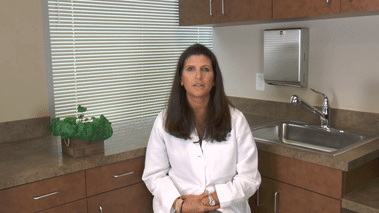Ear Tube Surgery (Tympanostomy) Procedure: Reasons and Benefits
January 28th, 2021 | 5 min. read


If your child experiences frequent ear infections, a chronic build-up of fluid in the middle ear, or experiences speech or hearing issues related to infections and fluid in their ears, they might require ear tubes. Or if you're having difficulty hearing due to fluid buildup in your middle ear or intense air pressure changes that have caused you to experience barotrauma, your doctor may recommend ear tubes. The surgeons at Houston ENT provide this service and will be happy to set up a consultation with you.
What are Ear Tubes?
Ear tubes are hollow, tiny cylinders, typically constructed of metal or plastic. They're inserted surgically into the eardrum. Ear tubes create an airway that will ventilate the middle ear, preventing fluids from accumulating behind the eardrum. Other terms for ear tubes are:
- Ventilation tubes
- Tympanostomy tubes
- Pressure equalization tubes
- Myringotomy tubes
Doctors often recommend ear tubes for children with a persistent buildup of fluid in their eardrums, particularly if the problem leads to hearing loss and impacts speech development. The doctor might also suggest ear tubes if your child often experiences ear infections.
Typically ear tubes will fall out after six to nine months. The holes end up healing shut on their own. Certain tubes, however, must be removed and the doctor might have to close the holes surgically.
Reasons for Ear Tubes
There are various reasons why both children and adults would require ear tubes.
Children
Fluid and middle ear infections are believed to be due to issues with a child's eustachian tube. This is a tube that attaches their middle ear space to the open space behind their nose (nasopharynx). Their eustachian tube allows middle ear air ventilation and allows normal ear fluid to drain into the nasopharynx.
The eustachian tube in children is shorter, narrower, and positioned more horizontally than an adult's. Normal anatomy problems like these mean kids have an inherently poorer function of the eustachian tube, causing insufficient ventilation and drainage from their eustachian tube. With reduced drainage and ventilation, kids can become susceptible to developing fluid build-up and negative pressure, leading to frequent ear infections.
Ear tubes are often suggested for kids with:
- Chronic otitis media (frequent middle ear infections) are hard to treat with antibiotics, particularly if kids are retaining fluid in between the infections.
- Otitis media with effusion (hearing loss due to the fluid build-up in the middle ear).
- An eardrum collapse (atelectasis). In kids with chronic negative pressure, their eardrums, over time, could thin out, stretch and collapse onto the floor of their middle ear, the three small bones in charge of transmitting sound (ossicles) or both. This pressure placed on the ossicles could cause conductive hearing loss and permanent bony erosion.
Ear tube surgery isn't suggested for all children with fluid build-up in their ear or an ear infection. Generally, antibiotics or other types of treatments are best suited for kids with occasional ear infections. But, if your child is experiencing multiple ear infections, you should speak with their doctor about whether ear tubes could potentially help.
Adults
Artificial ear tubes, in adults, are used to drain and ventilate the middle ear and for treating specific conditions if the first line of treatment didn't work. Conditions that might require Tympanostomy are:
- Fluid in the ear (otitis media with effusion, glue ear, or serous otitis media) that doesn't go away by itself or leads to issues with balance, hearing, or speech.
- Frequent ear infections or those that don't go away with other treatments.
- Auditory tube dysfunction (this is a condition usually caused in adults by chronic allergies).
- Retracted eardrums.
- Barotrauma caused by air pressure changes like from scuba diving or air travel, for examples.
INterested in learning more about the tymponastomy procedure?
Benefits of Ear Tubes
Ear tubes can:
- Decrease the chances of future ear infections and the need for repetitive oral antibiotic courses. Even if your child ends up with an ear infection when there are tubes in place, doctors can treat many of these infections through the use of antibiotic drops in the impacted ear instead of restorting to oral antibiotics.
- Correct or improve hearing issues caused by either negative pressure or the presence of fluid.
- Correct balance problems.
- Improve speech development.
- Improve sleep, behavior, and communication issues chronic ear infections cause.
- Reduce ear infection pain by eliminating the pressure (negative or positive) that occurs with fluid build-up or a middle ear infection.
Tympanostomy Risks
Like with any surgery, tympanostomy might have certain complications, which could include:
- Eardrum scarring caused by the procedure.
- The eardrum hole doesn't close following the tube coming out. If this occurs, the surgeon needs to repair the hole with another procedure.
- Repeated ear infections, even after Tympanostomy.
- The eardrum might harden or shrink after a few ear tube surgeries.
- Otorrhea could occur (a condition where there's continuous fluid drainage from the ear).
The Tympanostomy Procedure
Ear tube surgery is typically performed while the individual is put to sleep (general anesthesia). However, adults can have it done with a local anesthetic (the individual stays awake).
Before Ear Tube Surgery
The Houston ENT doctors will inform you of when and what you or your child can eat and drink prior to surgery, since the stomach needs to be empty on the day of the surgery.
No matter how simple or common, surgery can be scary for children. You can talk with your child about the surgery and what to expect to help prepare them.
During Ear Tube Surgery
An ear, nose, and throat surgeon performs the tympanostomy surgery. They'll perform it in an operating room after you or your child is put under anesthesia. During the procedure, the anesthesiologist will watch your child very carefully and keep them comfortably asleep and safe.
The surgeon makes a small hole in the eardrum, removing fluid from the middle ear with the use of suction. There won't be any visible stitches or cuts since the surgeon can access the eardrum through the ear canal. Then the surgeon will finish up by placing a small plastic or metal tube into the eardrum hole. Typically ear tube surgery takes around 10 to 15 minutes.
After Ear Tube Surgery
It's possible to experience some mild pain and continued drainage in the days after the ear tube has been placed through tympanostomy. It’s important to follow all instructions the doctor provides you and call the office if you have any concerns or questions. Most individuals can go back to work or school the day after the tubes have been placed, however, tympanostomy recovery times vary between people.
- Healing: Ear tube placement surgery recovery is generally fast. The doctor might prescribe antibiotic ear drops to use after the procedure which should be taken for several days after the surgery. Be sure to complete the whole course of medicine to avoid developing antibiotic-resistant bacteria.
- Pain: If you or your child experiences any pain or discomfort, over-the-counter pain medication like Advil (ibuprofen) or Tylenol (acetaminophen) should help. The eardrum will start healing around the tube over time, which will help keep it in place.
- Water Activities: The doctor will provide you with instructions about when it's safe to get your ears wet or put your head underwater. It's usually suggested to not get water in your ears for the first week after your procedure.
When to Call Your Doctor
Complications, like infections, could occur after the procedure. Pay attention for any signs of infection and be sure to contact the doctor if you or your child experience:
- Excessive bleeding
- Fever
- Foul-smelling or abnormal-colored discharge
Contact Houston ENT to Set Up Your Appointment
Houston ENT & Allergy owns and operates multiple clinics and hearing aid centers at all of its locations. We feature the latest hearing aid technology innovations.
While Houston ENT has become an extremely large physician group, our philosophy is to provide their patients with personalized treatment as if they were the only patient we have
Contact Houston ENT at 281-649-7000 or fill out our convenient appointment form online through their website to set up your Tympanostomy consultation.
She completed her undergraduate education at the University of Notre Dame in South Bend, Indiana. She moved to North Carolina to attend the Wake Forest University School of Medicine for her medical degree. She then went on to complete her residency at the University of Texas Health Science Center- Houston in 2001.
Topics:
